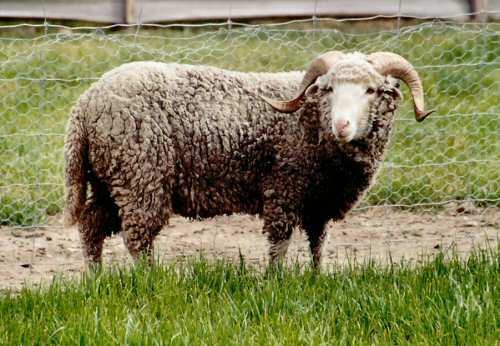New Zealand: Rare
Origin: Feral
Woodstock Sheep
A Rare Breed of New Zealand Origin

Woodstock rams in the wild (Steuart Laing photo)
One of New Zealand’s lesser known flocks of feral sheep has been found on Woodstock Station, lying on the middle reaches of the Waimakariri River valley west of Oxford in Canterbury. The Station is immediately adjacent to the Oxford State Forest.
During initial surveys of feral sheep in the 1970s they were considered to be of little significance and were among those tagged for eradication by the Department of Conservation. However, a more recent awareness of the potential genetic importance of feral flocks of early origin has resulted in a renewed interest in the Woodstock sheep.

Young Woodstock ram in domestication (Michael Trotter photo).
The flock is believed to have originated from an introduction of Merino sheep to the Station in second half of the nineteenth century, at a time when there was little fencing. Escapees were therefore easily able to establish themselves as a feral flock in the indigenous forest as well as the tussock grasslands. The present-day sheep have clean legs and faces and are disease and dag free. The rams are characteristically horned. Although basically white-woolled, one special feature of the Woodstock sheep is the percentage of ‘badger-faced’ animals found amongst them.

Badger-faced Woodstock ewe. (Steve Parsons photo)
A study was made of the Woodstock sheep in 1980 by Steve Parsons – he estimated that there were between 200 and 300 feral sheep on the Woodstock Station at that time. Of those seen, 96% were white, the rest black or predominantly black, and 3.4% or the sheep had badger faces. He described them as light bodied, leggy, open faced, fine-woolled Merinos which tended to shed their fleeces in spring or early summer. Adult males had curled horns with a spread of up to 50 centimetres. He also gave details of such things as behaviour, physical characteristics, growth, wool and skin characteristics, hornedness, reproduction, and internal and external parasites.
Although the Canterbury section of the Rare Breeds Conservation Society financed the recovery of a number of Woodstock sheep some years ago, their present status is very rare.
